Technology Presentation (PDF)
File information
This PDF 1.3 document has been generated by Apple Keynote 5.3 / Mac OS X 10.9.2 Quartz PDFContext, and has been sent on pdf-archive.com on 17/10/2015 at 21:40, from IP address 73.43.x.x.
The current document download page has been viewed 693 times.
File size: 33.56 MB (30 pages).
Privacy: public file
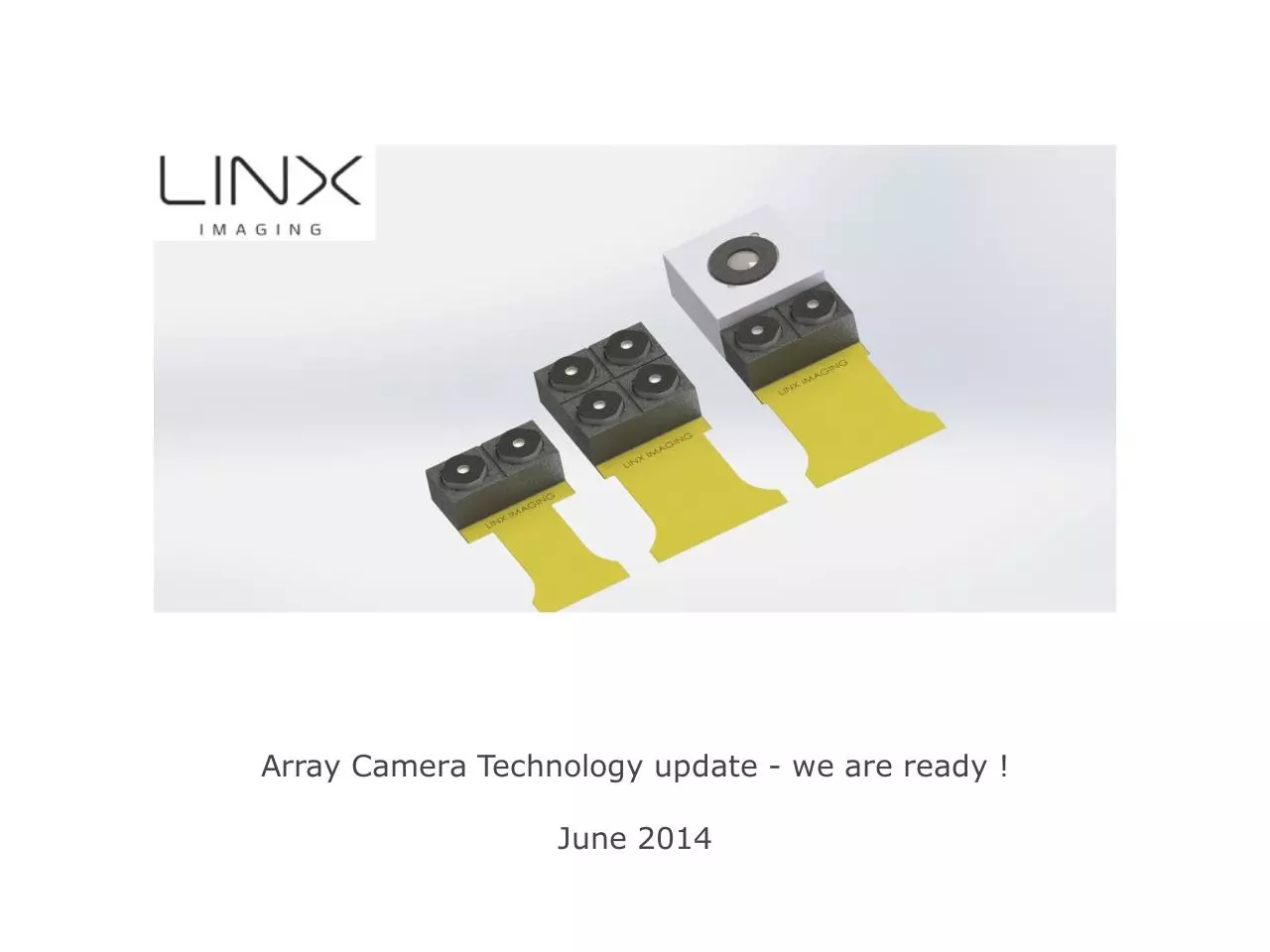
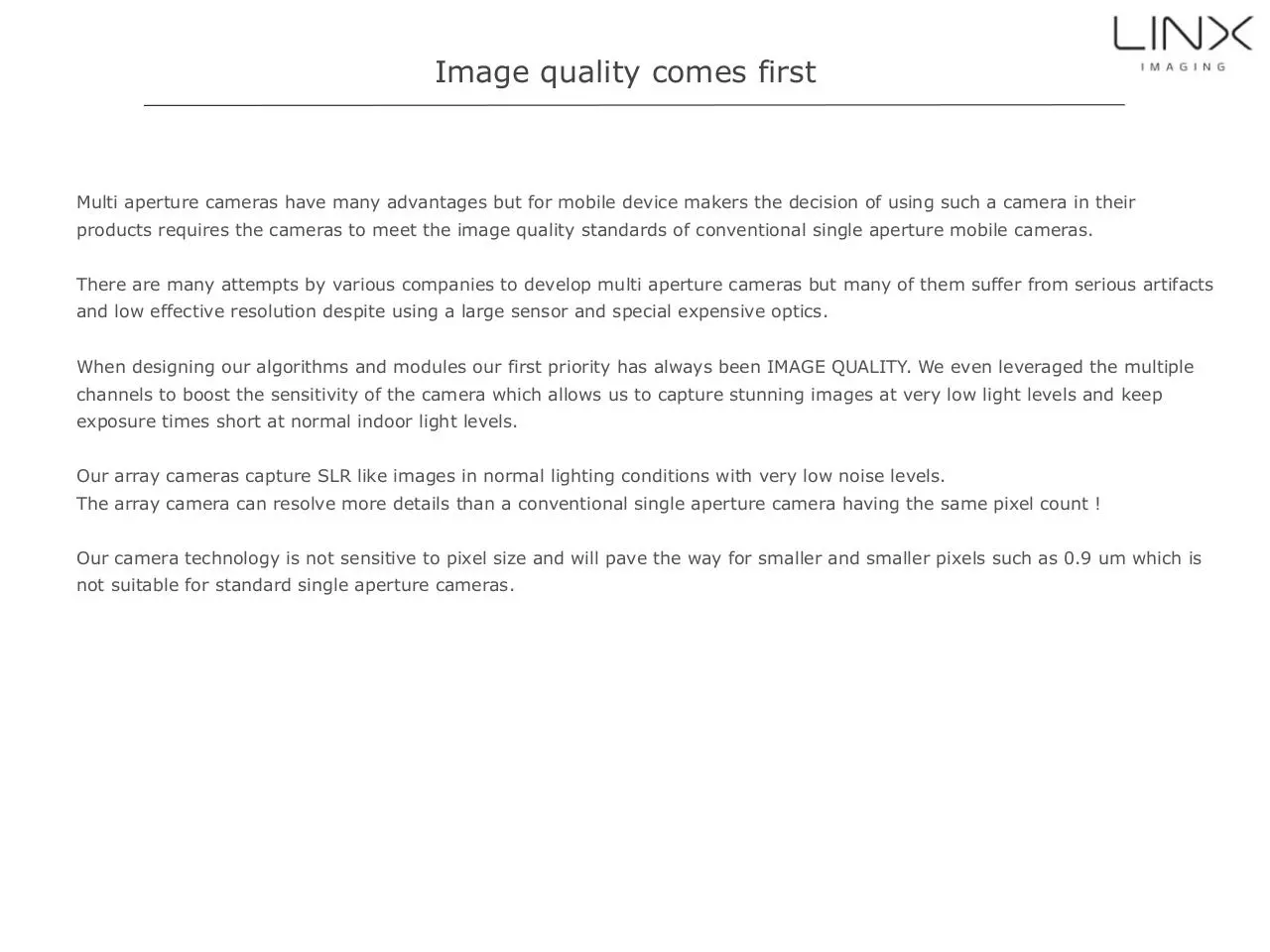
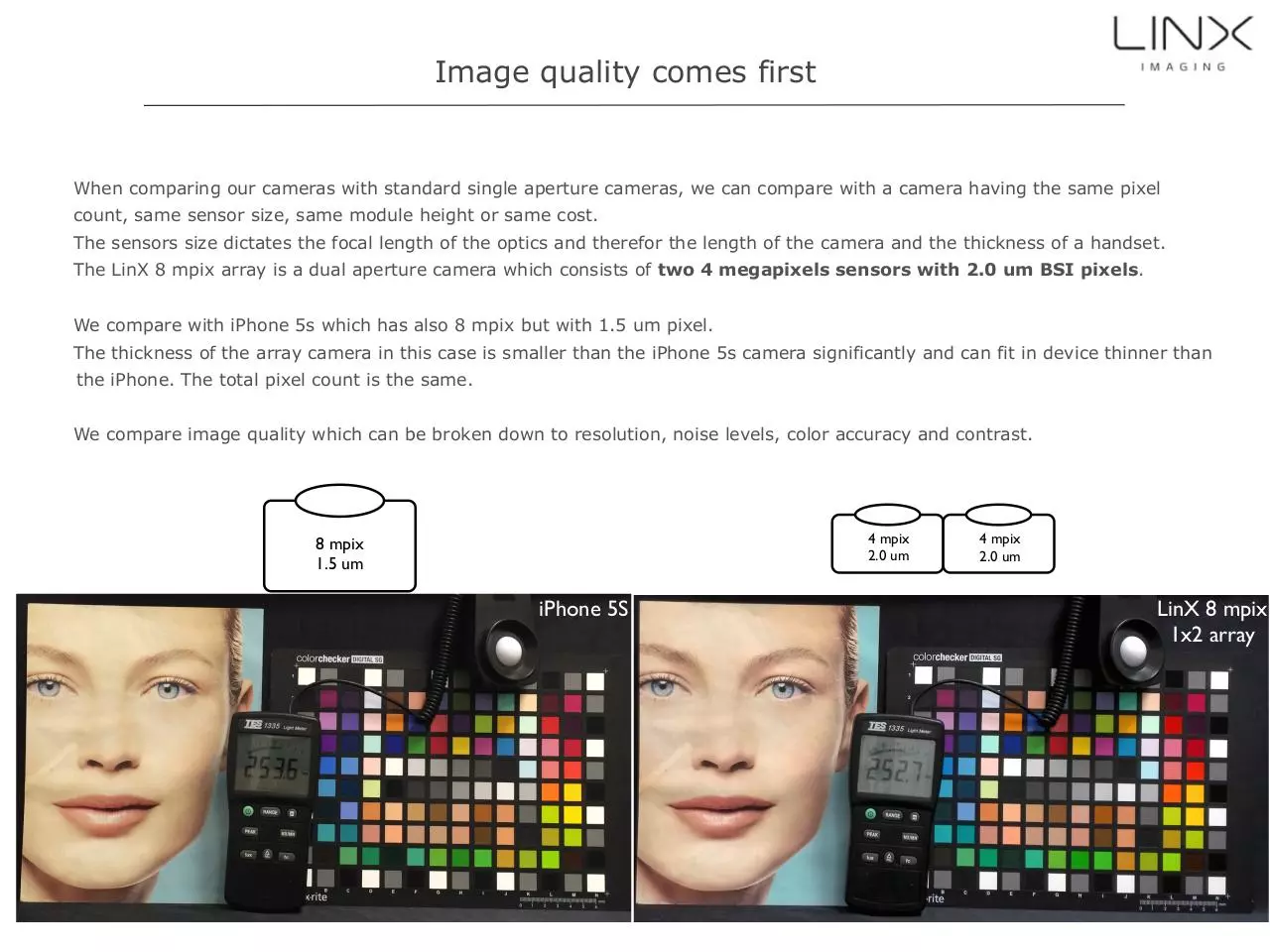
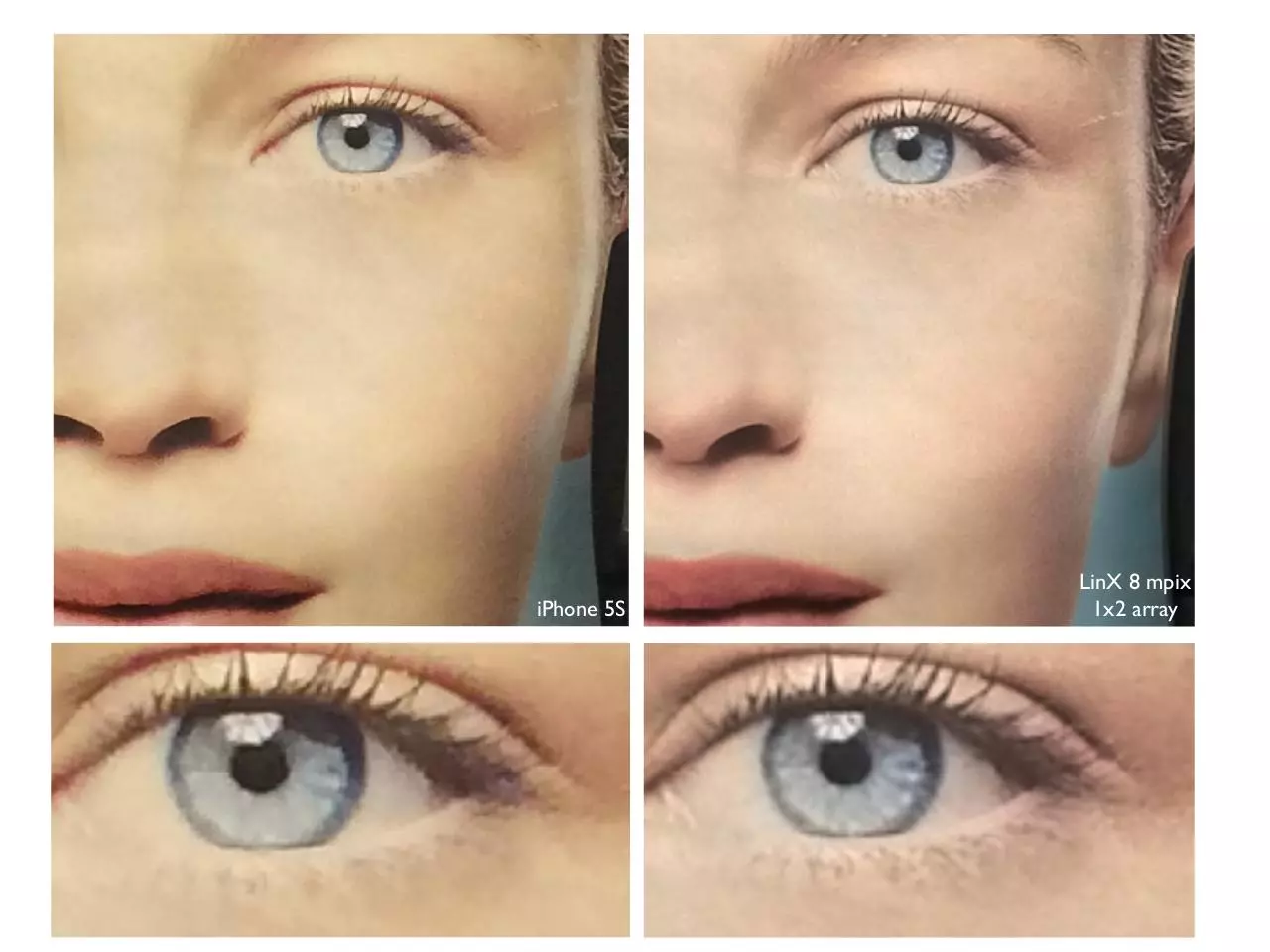
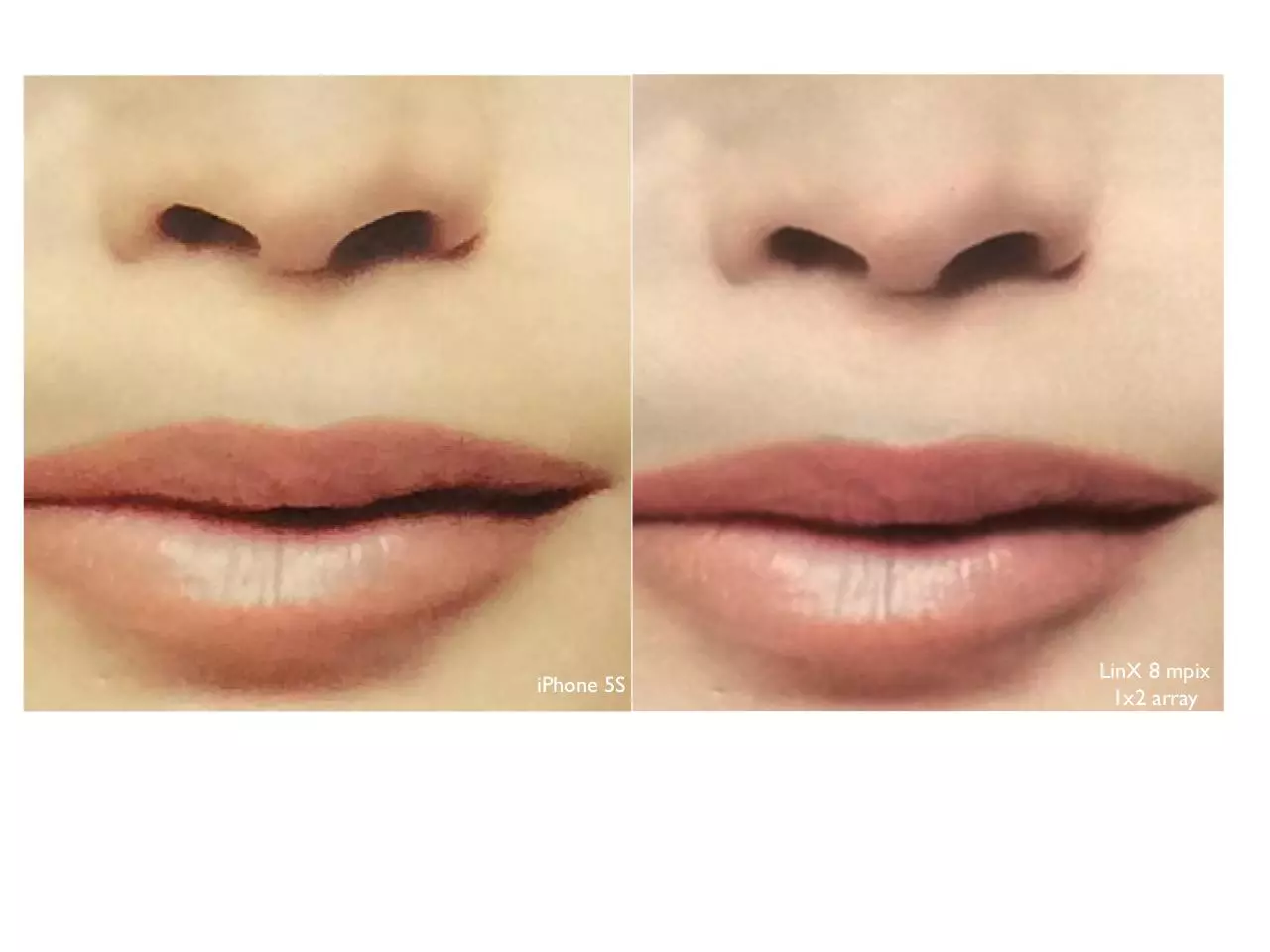
File preview
Array Camera Technology update - we are ready !
June 2014
Image quality comes first
Multi aperture cameras have many advantages but for mobile device makers the decision of using such a camera in their
products requires the cameras to meet the image quality standards of conventional single aperture mobile cameras.
There are many attempts by various companies to develop multi aperture cameras but many of them suffer from serious artifacts
and low effective resolution despite using a large sensor and special expensive optics.
When designing our algorithms and modules our first priority has always been IMAGE QUALITY. We even leveraged the multiple
channels to boost the sensitivity of the camera which allows us to capture stunning images at very low light levels and keep
exposure times short at normal indoor light levels.
Our array cameras capture SLR like images in normal lighting conditions with very low noise levels.
The array camera can resolve more details than a conventional single aperture camera having the same pixel count !
Our camera technology is not sensitive to pixel size and will pave the way for smaller and smaller pixels such as 0.9 um which is
not suitable for standard single aperture cameras.
Image quality comes first
When comparing our cameras with standard single aperture cameras, we can compare with a camera having the same pixel
count, same sensor size, same module height or same cost.
The sensors size dictates the focal length of the optics and therefor the length of the camera and the thickness of a handset.
The LinX 8 mpix array is a dual aperture camera which consists of two 4 megapixels sensors with 2.0 um BSI pixels.
We compare with iPhone 5s which has also 8 mpix but with 1.5 um pixel.
The thickness of the array camera in this case is smaller than the iPhone 5s camera significantly and can fit in device thinner than
the iPhone. The total pixel count is the same.
We compare image quality which can be broken down to resolution, noise levels, color accuracy and contrast.
4 mpix
2.0 um
8 mpix
1.5 um
iPhone 5S
4 mpix
2.0 um
LinX 8 mpix
1x2 array
iPhone 5S
LinX 8 mpix
1x2 array
iPhone 5S
LinX 8 mpix
1x2 array
Outdoors
LinX 8 mpix
1x2 array
Outdoors
LinX 8 mpix
1x2 array
Indoor image quality
Below we see some more comparisons with iPhone 5 and Samsung Galaxy S4 in mid light levels of
around 40-50 lux. Such light levels are typically found in our houses, restaurants and bars.
iPhone 5
1/20 sec
LinX 8 mpix
1/20 sec
Galaxy S4
1/17 sec
Indoor image quality
iPhone 5
1/20
LinX 8 mpix 1x2 array
1/20
If we observe the differences we will notice a much cleaner and sharper overall feel
to the images captured by the LinX array camera.
Galaxy S4
1/17 sec
Download Technology Presentation
Technology_Presentation.pdf (PDF, 33.56 MB)
Download PDF
Share this file on social networks
Link to this page
Permanent link
Use the permanent link to the download page to share your document on Facebook, Twitter, LinkedIn, or directly with a contact by e-Mail, Messenger, Whatsapp, Line..
Short link
Use the short link to share your document on Twitter or by text message (SMS)
HTML Code
Copy the following HTML code to share your document on a Website or Blog
QR Code to this page

This file has been shared publicly by a user of PDF Archive.
Document ID: 0000308889.